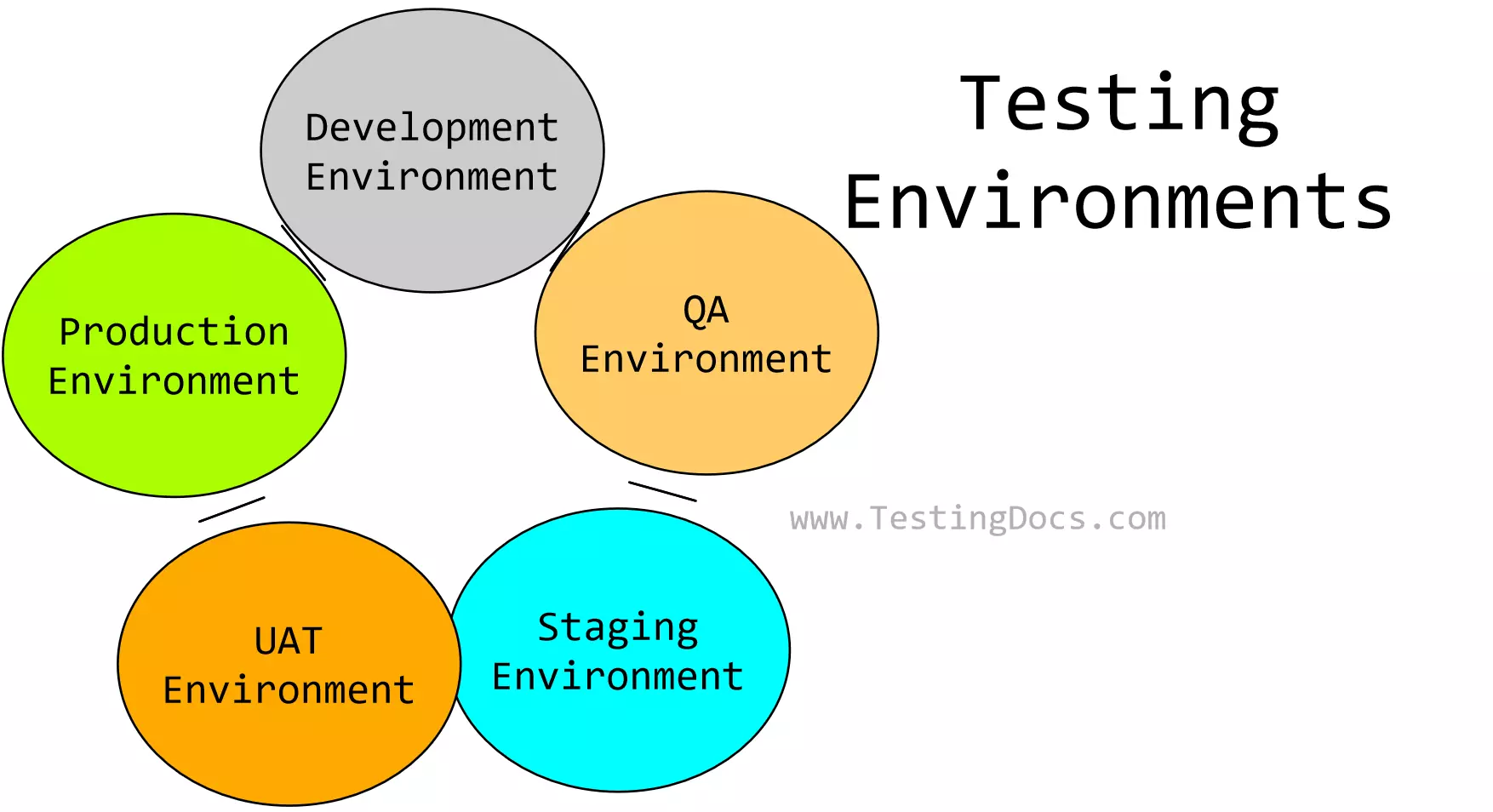Types of Testing Environments
Overview
In this tutorial, you will learn the different types of Testing environments in an organization. The names and number of environments may vary from organization to organization.
Types of Testing Environments
The standard and basic Testing environments in a typical organization setup are as follows:
- Development Environment
- QA Environment
- Pre-Staging /Staging Environment
- UAT Environment
- Production Environment

Development Environment
The development environment, or the Dev environment, is where the application is deployed and unit-tested by the development team. The software development team uses this environment. In most cases, Testers do not have access to this environment.
QA Environment
QA Environment is the testing environment. Versioned QA builds are deployed in this environment. Testers test and execute test cases on the application. Log defects and report them to the development team.
Staging Environment
This environment is used for Integration testing. The application interacts with other applications and middleware components. All the integration features are tested in this environment. Other teams have access to this environment to test the integration points. Relatively stable components of the system are deployed in this environment.
UAT Environment
This environment mimics the production environment regarding settings, configuration, data, etc. This environment is used for User acceptance testing, Load testing, Security testing, etc. Alpha and Beta testers do have access to this environment.
Production Environment
This is a live production environment, and the application is used by the end users, public customers, and other stakeholders. This environment is replicated, load-balanced, and accessible to the public world. This is not a testing environment. This environment is only tested during deployment windows to verify that everything works as expected.
—
Software Testing Tutorials: